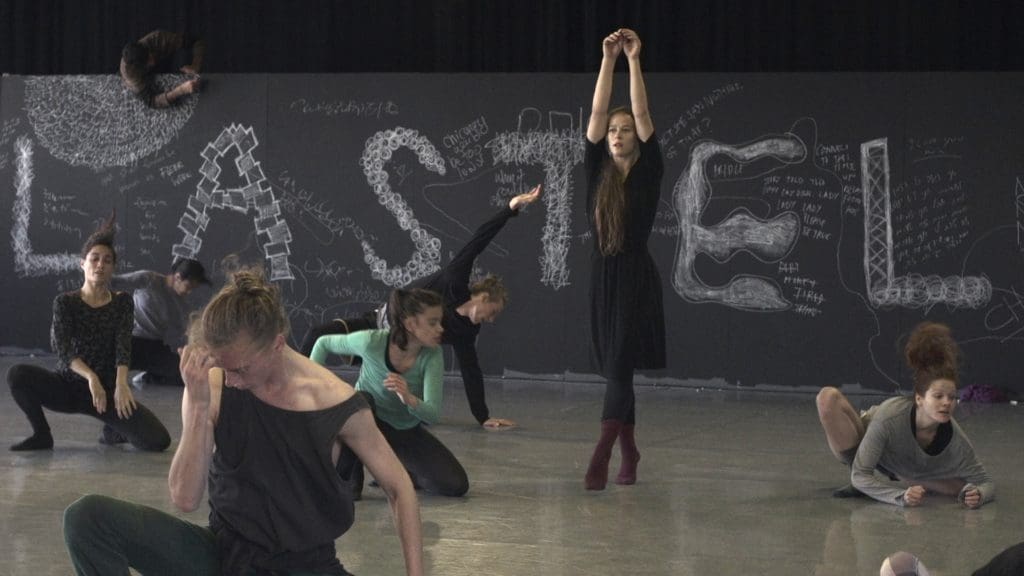
Dance is a universal language. Everything the audience needs to know is written on the dancer’s body.
Watching American dancer Bobbi Jene Smith perform her solo piece, “Harrowing,” we know exactly what kind of emotional turmoil drove its creation. That said, Bobbi Jene, the film that documents the emotional turmoil that drives the piece provides incredible context. Directed by Elvira Lind, it follows Smith just as she decides to end her 9-year run with Israel’s Batsheva Dance Company and move back to the States.
Though Bobbi Jene does perform all of “Harrowing” during the film, we only ever see parts of it. On some level, that can be a little disappointing. This is one of the world’s best dancers, how wonderful it would be to see her perform an original piece for just the price of a movie ticket. However, as the film goes on, we begin to understand that perhaps Lind is being merciful. When Smith describes the first time she took a “GAGA” class under Ogaden Naharin (who invented the style), she says that she vomited because it required so much from her—both emotionally and physically. From the brief glimpses we get of her pieces, it’s easy to understand why. There’s a rawness to them, an intimacy very much like the honest, unfiltered access we get into Smith’s life during the film.
The first thing we see is Smith, dancing naked in an empty room, a few clods of dirt scattered across the floor the only other thing in frame. Somehow, it only gets more intimate from there. It is almost shocking how much access Smith and the people in her lives allow Lind and there are many moments where it feels like the camera–and therefore we–are intruding. It’s not just the moments you expect to be private either, like when Smith is video chatting with her boyfriend, Orismus, back in Israel and she asks to see his penis. It’s moments like the one early on, when Smith tells Naharin that she’ll be going back to America and the way they look at each other tells you they were once lovers before Smith herself even reveals it.
Granted, it does make sense that Smith and the people in her life got so used to the cameras considering filming took place over two years. Perhaps all that material is also why Lind was able to make the film unfold as if it were a traditional narrative. What we see is so private, so unfiltered, that it’s almost difficult to remember that we’re watching a documentary. Some of the recurring leitmotifs–about marriage or aging or having children–are so well-structured that it seems a wonder they weren’t planned.
Oddly, the moment in the film that most reminds the viewer that what we’re seeing isn’t planned (the divine hand of God notwithstanding) is the ending. A traditional narrative would need a more definite conclusion. Bobbi Jene would have a surprise pregnancy or Orismus would suddenly turn away from the gate before boarding a plane back to Israel and propose right there. Instead, we leave Smith solid in her work, but unclear on her future personally. It’s not necessarily reassuring, but if the film and its titular dancer have shown us anything during this journey, it’s that there’s beauty in toil. There’s catharsis in struggling through difficult times and watching it can be breathtaking.
Rating: 9/10

